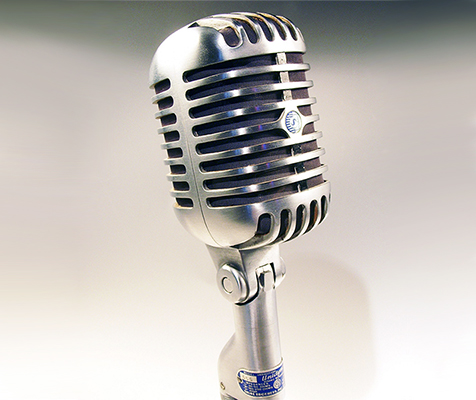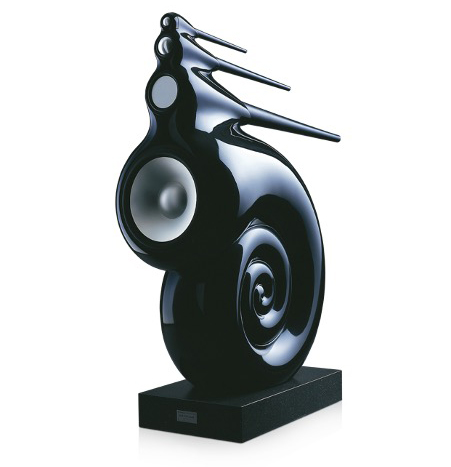
In Part 2 of this three-part series aimed at KNX professionals without a hi-fi background, Simon Buddle looks at high-fidelity audio.
Continuing from the last article in which I covered distributed audio, let’s now talk about Hi-Fi, what it is and how it fits in with the world of KNX. As I mentioned last time, I had a great awakening when I visited the Naim Audio demonstration studio at their factory in Salisbury. Playing records that I had listened to for years, that experience brought new clarity, dynamics, and musicality to them. Put simply, they sounded better than I had ever heard them, and that is the very simple point of Hi-Fi. The term dates back to the 1950s when it was used to describe audio equipment that was able to faithfully reproduce music. Remember that word, ‘faithfully’.
To truly understand Hi-Fi, we must go all the way back to the recording studio. The band, orchestra, and/or artist will have a certain sound they want to create. Groups will often choose a specific recording studio because of the ‘sound’ it produces. That ‘sound’ is twofold; the room they are playing in, room acoustics and the equipment used to record the performance. Abbey Road, for example, has over eight hundred different microphones dating back to the 1920s. A modern day rock’n’roll band might well choose to use a microphone such as the Shure Brothers Model 55 dating from the 1950s to recreate that authentic sound of their rock ’n’ roll idols.

Our take-home from this is simply that the sound (quality) is massively important. The music track that eventually comes out of a recording studio will have been lovingly recorded (probably many, many times), engineered on the studio mixing desk, compressed, and finally packaged ready for the consumer, amongst a myriad of other technical processes which are too numerous to mention here.
It is at this point we need to understand one hugely important fact. What we have in our hands is the music, but crucially, this is the ‘best’ it is ever going to be, unless it is remastered at some point in the future (see the Abbey Road YouTube below). But let’s stick with the idea that it is the best it is ever going to be. From here on in, it is all downhill for the music – the quality can only ever go down.
Everything starts at the source
If you watched the Abbey Rd video you’ll have heard, at the beginning, the question ‘What is the most important part of recording music?’ being asked, and the reply ‘The source’, i.e. the musicians. And this is where our journey through Hi-Fi begins. We have a piece of music; it contains 100% of the information available to us that we might possibly be able to hear.
Hi-Fi is typically broken down into three elements, the source equipment (i.e. digital stream, CD, record player, reel-to-reel tape etc), amplification and speakers. It is the job of any Hi-Fi component in the chain to replay the music as faithfully as possible to the original recording. Not add colouration, noise artifacts, or its own unique sound. Hi-Fi valve amplifiers, typically, have a specific sound, for example. You may well enjoy that sound, but it is not truly faithful to the original.
Okay, okay, so we must air this argument now. There is a debate around whether listening to music should be/is subjective or objective. You can absolutely like the sound a particular set of speakers makes, but is it true to the original? If you like the sound of the speakers, I suggest that you are listening subjectively. As for me, I have had the full objective listening chipset inserted into my brain after years working at Grahams Hi-Fi and Linn Products. I want my system to reproduce the original as accurately as possible, and to be as faithful to the intentions of the band when they recorded the music.
So, there we have a hugely précised back-story to Hi-Fi. Here are a few important pointers to think about:
Digital streaming
The best sound always starts with the best source. In our world, that probably means a digital stream. The Tidal (Premium) streaming service will always outperform recordings that have been compressed to the mp3 format – at either 1411kbps or 9216kbps for the former versus 128kbps for the latter, there’s simply more information to start with. If you play low-quality 128kbps mp3 through something like a pair of high-end B&W Nautilus speakers, what you will hear is just how terrible the recording is. Use Tidal and the sound will be transformed. Fun fact: on a record player the stylus is only correctly seated, relative to the groove at 90o, at two points on the record, the remainder of the arc is a compromise in sound quality.

Choosing the right reproduction equipment
Choose the reproduction equipment carefully. If you aren’t familiar with amplifier and speaker combinations, I’d certainly recommend seeking professional advice at this point. Most Hi-Fi shops will work in multiroom audio but probably aren’t going to be getting involved with KNX installs. This will mean that you can forge an alliance and work side by side to give the customer a great system.

Conclusion
Multiroom audio is all about ease of use, whereas Hi-Fi is all about quality. We may well have customers who want one or other or both. With a little bit of knowledge, we can certainly help them to fulfil both desires. KNX and Hi-Fi are not items that I’d integrate, but that doesn’t mean that we shouldn’t bring them into our world. Hi-Fi sits alongside the other extra low-voltage services that we provide, albeit in a slightly geeky niche. It is an area that you’d do well to buddy-up with a local shop and get some audio training from organisations such as CEDIA or Avixa.
Simon Buddle CEng MIET, is a consultant for Future Ready Homes, a specialist in BMS and ELV services system design.












